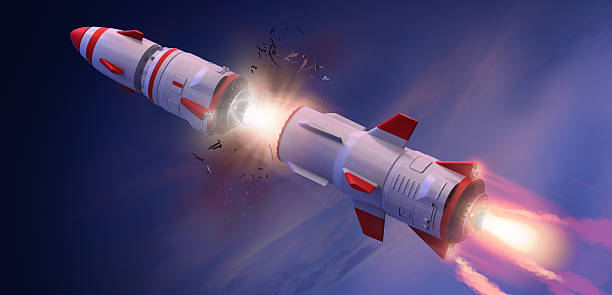Missiles are among the most complex and powerful tools in modern military technology. From guiding systems to propulsion units, each component plays a vital role in ensuring a missile reaches its target accurately and effectively. Whether you’re a defense enthusiast, a student of aerospace engineering, or simply curious about how these sophisticated machines operate, understanding the key parts of a missile can be both fascinating and informative.
1. Airframe: The Skeleton of the Missile
The airframe serves as the missile’s structural backbone, housing and supporting all internal components. It’s typically constructed from lightweight yet durable materials such as aluminum alloys, titanium, or advanced composites—each selected for their ability to endure extreme heat, pressure, and vibrations during flight. Precision in manufacturing is crucial, and processes like industrial laser cutting in Wisconsin play a vital role in shaping airframe components with accuracy and consistency.
The airframe’s design significantly influences the missile’s aerodynamic performance, directly impacting its speed, range, and maneuverability. Many designs also incorporate fins or control surfaces to maintain stability and guide direction throughout its flight path.
2. Propulsion System: Powering the Flight
Missiles are propelled by rocket engines or jet engines, depending on their type and intended range. The propulsion system is what gives the missile its thrust and speed.
- Solid Propellant: Common in short-range and tactical missiles, this system is reliable and compact. Once ignited, it burns until the fuel is exhausted.
- Liquid Propellant: Found in some long-range missiles, these offer more control but require complex fueling and storage systems.
- Ramjet or Scramjet Engines: Used in some supersonic or hypersonic missiles, these engines rely on high-speed airflow and are efficient at extremely fast speeds.
The propulsion system must be carefully balanced with the missile’s weight and payload to ensure optimal performance.
3. Guidance System: Finding the Target
The guidance system is what steers the missile toward its target. Depending on the type of missile and its purpose, the guidance system may use a variety of technologies:
- Inertial Navigation: Relies on internal sensors to track position, speed, and direction. It does not require external signals, making it resistant to jamming.
- GPS Guidance: Uses satellite signals for precise navigation and is common in modern cruise missiles.
- Laser or Infrared Guidance: Tracks a heat source or laser reflection on the target.
- Radar Guidance: Uses radio waves to detect and home in on targets, often used in air-to-air and surface-to-air missiles.
Some missiles use a combination of these systems for greater accuracy and redundancy.
4. Control System: Steering and Stability
While the guidance system tells the missile where to go, the control system makes it happen. Using movable fins, canards, or internal thrust-vectoring mechanisms, the control system adjusts the missile’s trajectory during flight.
The control system must respond in real-time to data from the guidance system, making precise adjustments to stay on course and compensate for factors like wind, gravity, and countermeasures.
5. Warhead: The Payload
At the heart of every missile is its warhead—the part that delivers the intended effect upon reaching the target. Warheads vary based on mission type and target:
- High-Explosive (HE): Designed to cause maximum blast damage.
- Fragmentation: Releases shrapnel to disable personnel or vehicles.
- Penetrating Warheads: Built to pierce armor or fortified structures.
- Nuclear Warheads: Capable of mass destruction, used in strategic missile systems.
Modern missiles may also have programmable or multi-mode warheads to adapt to different targets or combat scenarios.
6. Seeker Head: Target Acquisition
In guided missiles, the seeker head is the component that detects and locks onto a target. It works in conjunction with the guidance system to track the target during the final approach phase.
Depending on the missile type, the seeker can use:
- Infrared (IR) sensors
- Radar homing
- Laser guidance detectors
An advanced seeker allows a missile to “home in” on a moving or evasive target with remarkable accuracy.
7. Fuze and Detonation System: Triggering the Impact
The fuze is a crucial safety and timing mechanism. It determines when the warhead should detonate—whether on impact, in proximity, or at a pre-set time.
Types of fuzes include:
- Impact Fuze: Activates on contact.
- Proximity Fuze: Detonates when the missile is near the target.
- Timed Fuze: Explodes after a specified duration.
The fuze ensures that the warhead delivers maximum effectiveness, depending on the mission objective.
Final Thoughts
Missiles are marvels of engineering, combining precision mechanics, cutting-edge electronics, and powerful propulsion in a compact package. Understanding the key components—from the propulsion system to the guidance and warhead—reveals just how much science and strategy go into every launch.
As defense technologies continue to evolve, missile systems are becoming smarter, faster, and more adaptable. Whether used for strategic deterrence, tactical operations, or precision strikes, the inner workings of a missile highlight the intersection of innovation and defense in the modern world.

